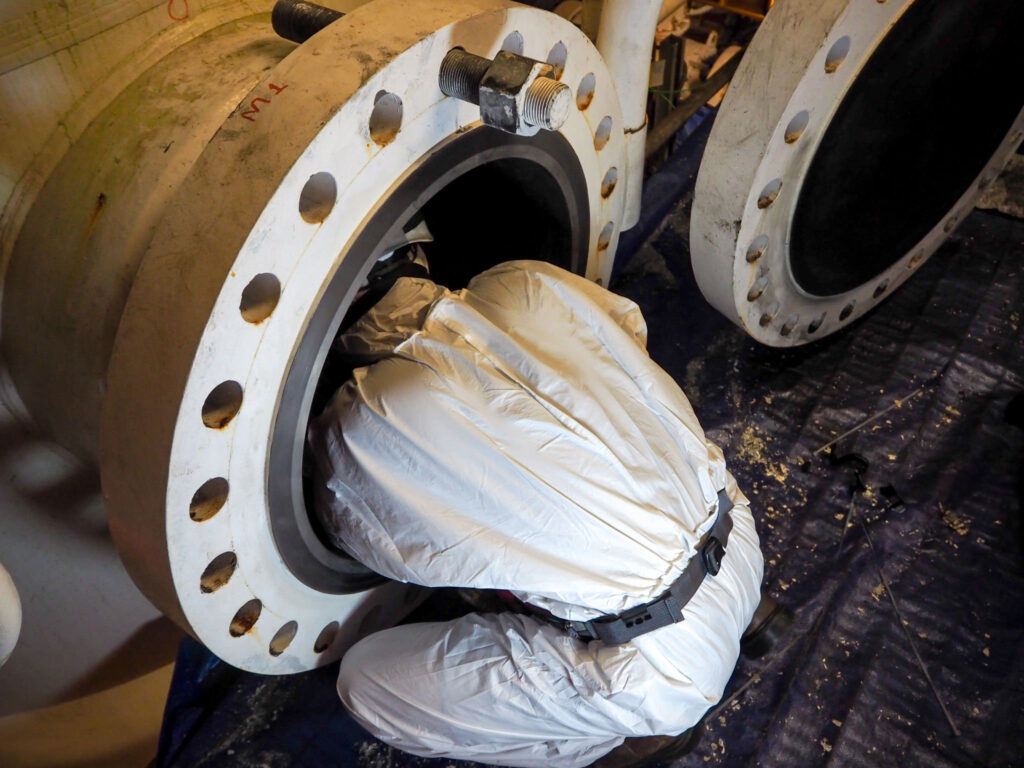Physical hazards are often the most visible yet underestimated confined space danger. Unlike atmospheric or biological risks, physical hazards can be seen, touched, or heard. Yet many workers overlook them because they seem obvious or “manageable.”
The truth is that physical hazards are more dangerous in confined spaces. Limited movement, restricted visibility, and tight geometry mean that even simple hazards such as sharp edges, heat and noise become far more severe.
Common Physical Hazards in Confined Spaces
Physical hazards include:
- Poor lighting or complete darkness
- Slip and fall risks from wet or uneven floors
- High noise levels that echo in enclosed spaces
- Moving mechanical parts or stored energy
- Heat, steam, or extreme temperature variation
- Sharp edges and protrusions that cause cuts or entanglement
- Falling objects, especially in vertical entries
- Difficult access that strains the body or limits escape options
- Electrical hazards from exposed wires or residual current
- Limited visibility, increasing the risk of collision or entrapment
- A minor accident can turn into a major injury when rescue is impeded by physical hazards. That is why confined spaces are more risky for workers than open areas.
Identifying Physical Hazards
Before entry, an assessment should be done:
- Conduct a full visual inspection using lighting or cameras
- Identify pinch points, exposed edges, or moving machinery
- Test structural stability of ladders, anchors, and platforms
- Check for hot surfaces or residual pressure
- Review the space’s history: has it caused injuries before?
- Physical hazards should be mapped and documented as part of the entry plan.
Solutions to Eliminate Or Control These Hazards
- Lighting & Visibility
High-performance, explosion-proof portable lighting like Nightstick intrinsically safe work lights ensures that workers can see trip hazards, edges, and structural features clearly. Good lighting prevents slips, collisions, and misjudged movements.
- Lockout / Tagout (LOTO)
Before entry, all mechanical systems must be neutralised. This means no moving parts and no stored energy. Utilising a LOTO system helps workers understand whether a machine is safe to use or not.
- Fall Protection & Access Equipment
Tripods, harnesses, retrieval systems, and lifelines protect workers entering vertical or elevated confined spaces.
- Heat & Thermal Protection
Appropriate PPE protects workers from hot surfaces or temperature shock.
- Noise Control & Hearing Protection
Even moderate noise becomes harmful when amplified inside a confined space. Ear protection is essential.
- Safe Pathways & Clearance
Workers must be briefed on safe movement patterns in tight spaces to avoid entrapment or falls.
Why Physical Hazards Need Equal Priority
While atmospheric or biological hazards may kill silently, but physical hazards injure instantly. In the tight geometry of a confined space:
- A simple fall can become life-threatening
- A knocked-over tool can land on someone with nowhere to move
- A hot surface can cause burns that complicate rescue
- Poor lighting can trigger a chain of events leading to entrapment
The best confined space safety programs treat physical hazards as seriously as atmospheric ones with training, planning, and the right equipment.






